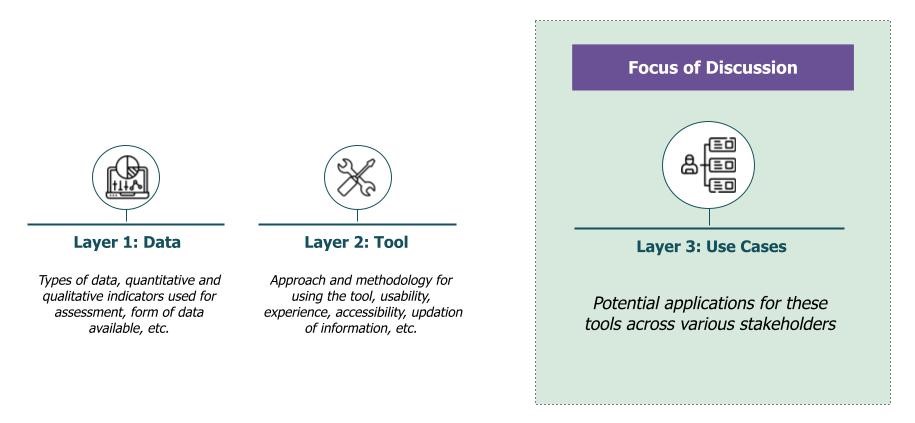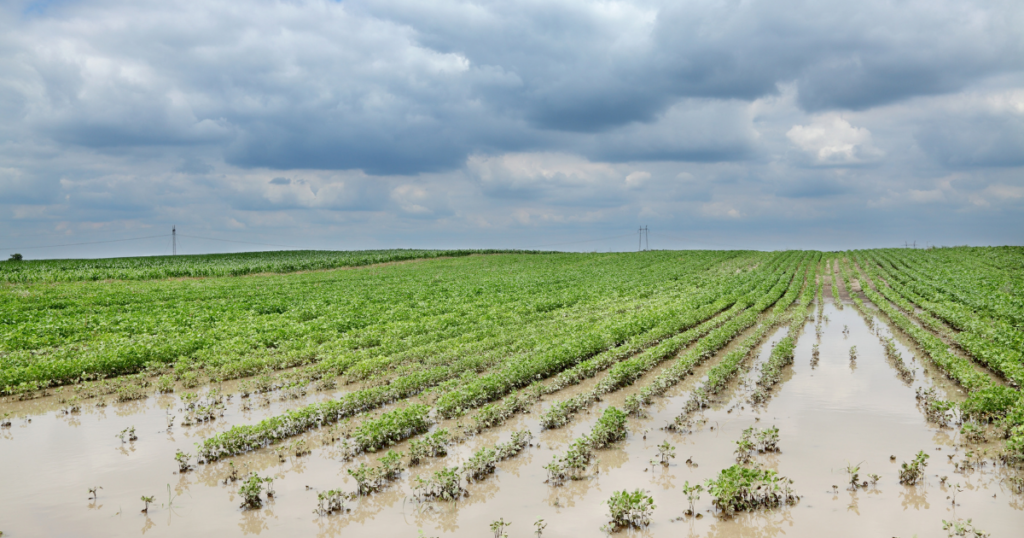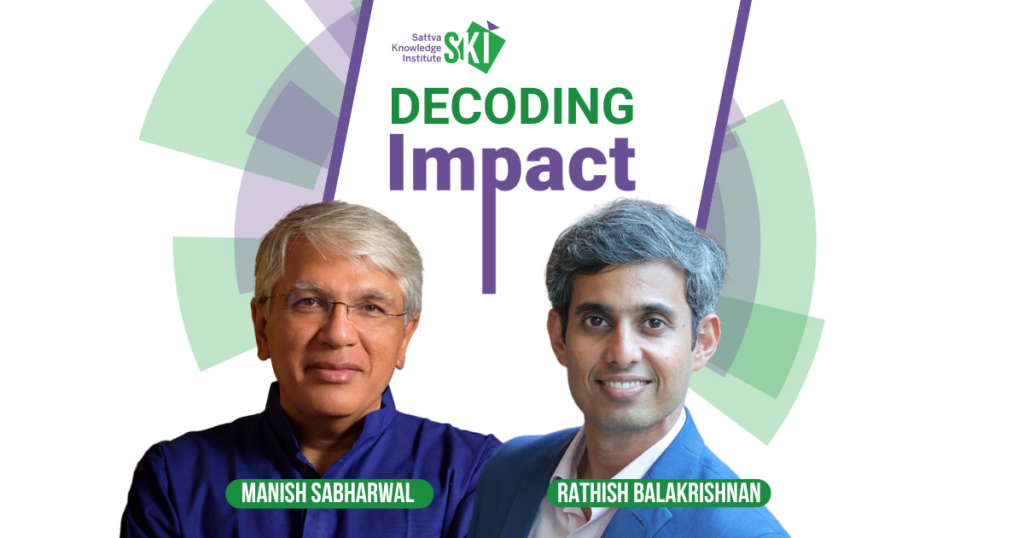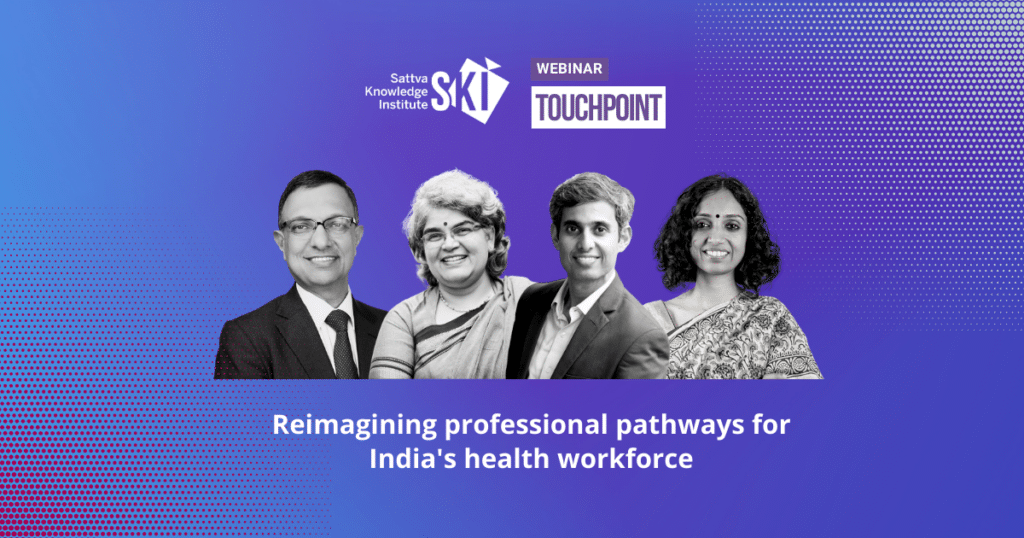India is considered one of the most water-stressed countries in the world. With only 4% of the world’s freshwater resources, India’s water scarcity crisis impacts 17% of the global population, highlighting the urgent need for sustainable solutions to safeguard existing water resources. In India, agricultural activities alone account for around 90% of the water withdrawals, and this impact has been visible on groundwater resources.
The underutilisation of critical data on groundwater vulnerability constrains informed decision-making in business, policy formulation, and adoption of water-efficient agricultural practices by farmers. Amidst these challenges, there lies a need to leverage data to assess groundwater risks. This could enable effective decision-making and action in water-positive risk assessment frameworks and tools.
By leveraging available data resources, there is immense potential to develop robust frameworks for devising appropriate tools. Moreover, with a growing recognition of the importance of water resource management, both businesses and governments are increasingly seeking ways to incorporate groundwater risk assessments into their strategic commitments.
The Water-positive Risk Assessment Tool is designed to understand and manage groundwater by utilising science and data. This tool can facilitate groundwater conservation significantly.
The Water-positive Risk Assessment Tool needs to be positioned for implementation at scale. By encouraging widespread adoption across industries, the framework for this tool should aim to equip stakeholders with the information needed to assess and mitigate water-related risks effectively. Its adaptability to diverse geographical and sectoral contexts shall further make it a valuable asset in addressing water challenges worldwide.
It shall have the following envisioned impacts:
- Business and Private Sector Enablement: The tool will empower businesses and corporates to identify groundwater hotspots within their supply chains, enabling targeted interventions and sustainable practices. It can also help financial institutions and investors to help measure risks and returns, and make informed decisions while disbursing finance to critical geographies.
- Civil Society Empowerment: The tool shall aim to provide civil society organizations with comprehensive data assessment tools, enabling tailored support to farmers based on groundwater risk assessment data. Armed with data-led insights, farmers can adopt water-efficient farming practices, enhancing resilience and sustainability in agriculture.
- Government Alignment: Utilising this tool, governments can strategically align policies and budgets with high water vulnerability areas, ensuring efficient resource allocation and effective policy implementation.
The evaluation of current risk assessment tools comprises three layers: indicators (Layer 1 data), methodology (Layer 2 tools), and use cases (Layer 3).

The primary focus of the first Community of Practice (CoP) session was to deliberate on Layer 3, specifically exploring broad, hypothetical use cases that showcase significant potential for the implementation of the water-use risk assessment framework.
Five potential use cases were presented to gather feedback from the participants, as illustrated in the figure below.

The use case for corporates and financial institutions garnered the most interest among participants. Additionally, water reuse certificates were acknowledged as another potential use case.
Other use cases, such as those for micro-irrigation companies, were considered less of a priority due to constraints that depended on long-term policy changes and priorities of state governments.
“For micro irrigation companies, penetration is not dependent on water stress or criticality, but mostly on purely operational factors and the complementing policies of the State Governments.”
Similarly, financial institutions prioritise overall viability and returns on investment rather than focusing on water stress or similar parameters. They aim to partner with key stakeholders who can mitigate risks, which is more challenging in agriculture. While high-potential crops like sugarcane in stable industries may offer some possibilities, these opportunities remain limited and difficult to realise. These constraints affect their ability to make decisions based on such tools. Finally, three use cases emerged as the most resonant and validated by the participants in the room.
Subsequently, businesses utilise these assessments to plan on-site strategies for water use and conservation, while also monitoring progress towards their water conservation targets.
- Scenario: Corporations confront mounting pressure to adhere to ESG principles for sustainability amidst rising concerns over water scarcity, pollution, and regulatory pressures. There is an increasing need for companies to commit to long-term water conservation targets and develop location-specific plans to achieve them.
- The Tool in Action: The tool offers data-driven insights to assist corporations in pinpointing and prioritising water-related risks across their operations and supply chains. By providing accurate assessments of groundwater through credible and granular data, the tool identifies risks such as depletion, fluctuation, and usage patterns, empowering businesses to devise tailored risk mitigation strategies.
- Use Case: Companies utilise risk assessments and projections to plan strategies effectively and monitor progress towards water conservation targets over time. This is evidenced by corporations showcasing advancements in water-related metrics within their sustainability and ESG reporting frameworks, highlighting the impact of risk assessment tool-driven strategic planning and continuous improvement efforts.
Feedback:
1. Positive response on need for scientifically validated solutions by businesses: Businesses understand the importance of scientifically validated solutions for water conservation. Agriculture is a key area where significant water savings can be achieved. FMCGs recognise this potential and are looking for solutions to optimise water usage in agricultural supply chains. The tool’s credibility and data-driven approach can provide the assurance needed for decision-making in water conservation strategies.
- Granular measurement demands: FMCGs are seeking precise measurements at the granular level – including block, district, and watershed levels – to offset their water consumption. To effectively use risk assessment tools for decision-making among corporations, it is crucial to have data available at the right level.
“Publicly available data is generally accessible at the block, district, and watershed levels, which are the levels of granularity most stakeholders utilise today. If any organisation wants to go beyond this level of granularity, they will have to go to the national groundwater regulatory authority. Thus it is important to look at the granularity based on a case-to-case basis. Based on the framework, developing a tool is the next crucial step.”
- Challenges in validation and verification: While there is a demand for granular-level measurements, validating and verifying these measurements pose significant challenges. The tool can provide a framework for ongoing monitoring and assessment, even if validation and verification occur separately.
“We fail to acknowledge that the more data you give out, the more data other people will give out and we can get mutual benefits. And thus it is important to recognise where the data is going to be derived from, and how data transparency can be promoted to make information available in the public domain for collective benefits.”
- Scenario: Achieving water efficiency necessitates a blend of public, private, and philanthropic funding. However, the lack of observable and straightforward outcome metrics hinders the unlocking of outcome-based financing.
- Tool in Action: The tool offers credible data on improvements in groundwater levels at sub-block levels, enabling the measurement of outcomes resulting from specific interventions.
- Use Case: Financial institutions and philanthropists can design and implement outcome-based financing initiatives leveraging the risk assessment data. This approach unlocks mainstream capital for water efficiency initiatives, driving impactful investments in sustainable water management.
Feedback:
- Positive response on the need for financial institutions: There is a demand for clear structures and risk mitigation strategies in financing water-related initiatives. This approach, tied to specific water uses, extends beyond agriculture to various sectors. Establishing a credible data source can enhance traditional financing models and enable access to outcome-based financing for water initiatives. (To read why data is important for decision-making in the banking sector refer to – Hidden Risks and Untapped Opportunities: Water and the Indian Banking Sector | Panda.org) There has been a significant increase in the reporting of climate finance trends, with global investments nearly doubling over the past decade, totaling USD 4.8 trillion from 2011-2020. Organisations like the Climate Policy Initiative regularly track these trends, highlighting the potential of data to inform decisions. This growing wealth of climate finance data can be effectively coupled with an effective risk assessment tool to enhance corporate decision-making and drive impactful climate actions. (Read more: Global Landscape of Climate Finance: A Decade of Data – CPI)
- Tailored use cases based on localised and crop-specific needs: The shift in crop choices, such as moving from economically unfeasible cotton to water-intensive paddy, underscores the need for innovative financing solutions. The water-positive risk assessment tool can assist in assessing water availability and guiding sustainable crop selection. Moreover, based on the nature of the industry (crop or supply chain based), collaborations between entities like private sector players like mills (in case of sugar), financial companies, and other active ecosystem partners can create financing models tied to specific water uses, supported by transparent supply chains.
- Tracking Outcomes for Adaptation Goals: There has been a growing emphasis on enhancing adaptation measures, particularly within sectors such as agriculture, rather than solely focusing on mitigation efforts. Robust data tracking and analysis are essential for tracking outcomes, particularly concerning setting global adaptation goals. In this case, the tool’s data can support policy development and financing decisions by providing insights into water-related outcomes and facilitating adaptive strategies across sectors.
- Private investors as key stakeholders: It was discussed that investors, like financial institutions, are key stakeholders in integrating water risks into decision-making processes. For example – Collaboration between WRI Global and Blackrock, which focused on similar work in the United States. (Refer here for details)
- Scenario: Companies establish ambitious goals for responsible water stewardship, necessitating investments in water conservation initiatives.
- Tool in Action: The tool would facilitate precise measurement of water conservation across various initiatives, enabling the creation of water credits.
- Use Case: Businesses utilise risk assessments to generate and trade water reuse credits (WRCs) in water markets. This incentivises further investment in water efficiency and allows businesses to offset their water impact by trading credits with others.
Feedback:
- Fairly positive response based on enabling efforts by Government: It could be beneficial to include the Government of India’s green credits programme as a use case, particularly for incentivising farmers and industries. This programme could be linked to water certificates, providing additional motivation for sustainable water management practices.
- Unintended consequences of Green Credits: It was also highlighted that green credits, intended to reduce carbon emissions, can lead to unintended consequences such as incentivising deforestation and monoculture plantations, which harm biodiversity. Additionally, these credits may disproportionately benefit wealthy corporations, perpetuating social and economic inequalities, and may not always result in genuine carbon reduction, undermining their environmental goals.
“Many times it is observed that whenever there is a commitment to neutralise water etc. by companies, they will try to move away from the critical risk basins to a different basin. So the problems remain the problem. And that has not yet been solved.”
Next Steps
To enhance engagement on groundwater risk assessment, an online platform will be created for sharing resources, with a recurring meeting series scheduled every 90 days. Feedback forms will be circulated ahead of sessions to align on topics of interest. Additionally, expert consultations and one-on-one participant outreach will be conducted for deeper insights.




